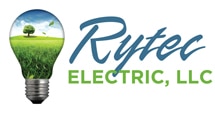What Does the Energy Star Label Mean?
Just about every homeowner wants to get the most out of their home’s appliances and save on energy bills, and many even want to help protect the planet from excessive energy use by lowering their carbon footprint. All three of these goals have one thing in common: the Energy Star label.
You’ve probably seen it on appliances at the electronics or hardware store, or you might have noticed its appearance in an ad on TV or in a magazine. But, what exactly does the Energy Star label mean? And how does it help you and your appliances at home?
We’re going to answer both of these questions in detail, as well as explain exactly how the Energy Star label is achieved and distributed by the Environmental Protection Agency (EPA) in the United States.

Source: Wikipedia
What Is Energy Star?
According to the Energy Star website, “ENERGY STAR® is the government-backed symbol for energy efficiency, providing simple, credible, and unbiased information that consumers and businesses rely on to make well-informed decisions.”
Basically, the Energy Star label and ratings show that any particular product meets or exceeds the federally mandated policies with regard to energy efficiency. In turn, the more appliances that reach this level, the better the benefits for sustainability long term.
What Does the Energy Star Label Mean?
A major part of Energy Star is the rating system that bears its name. This primarily focuses on three areas: appliances, homes, and businesses. Naturally, not all appliances or buildings are created equally, so the official guidelines depend on the product or appliance in question.
For example, the water requirements a dishwasher must meet in order to get an Energy Star rating are not the same for washing machines. That said, most appliances and products today, from air conditioners to air purifiers, from home refrigerators to dryers frequently come with an Energy Star rating.
What Makes a Product ENERGY STAR?
The qualifications for what makes a product Energy Star rated vary widely by appliance, but the requirements are strict and thoroughly tested for confirmation. In fact, the EPA makes sure that every appliance earning the Energy Star label is independently certified in order to provide the energy efficiency, overall performance, and cost savings that people have come to expect from these products. For instance, washing machines that are Energy Star will have a larger tub capacity, which means that consumers can run fewer loads but still clean the same total amount of laundry.
For top-load washers that are Energy Star certified, these models take advantage of newer technology that doesn’t even require the washer to fill completely with water. Instead, they clean with advanced washing systems that toss clothes within a stream of running water. Plus, many of these come with extra sensors that can monitor incoming water level as well as temperature, and will often rinse clothes using repetitive, high-pressure spraying mechanisms, instead of fully soaking them in the tub.
That’s just one example, but it provides some insight into what exactly makes a product Energy Star. Whether you’re in the market for a washing machine, a dryer, or something else entirely, to earn the Energy Star label, a product must meet certain federally mandated standards, which in turn provide benefits and savings to you and the planet.
A Quick Note: A similar standard to Energy Star is in place for appliances that are CEE Tier qualified. CEE stands for the Consortium for Energy Efficiency and it offers a similar set of mandates to products for energy efficiency and cost savings benefits.
How Does EPA Choose Which Products Earn the Label?
This sort of begs the question: how does the EPA actually choose which products earn the label? In fact, the Environmental Protection Agency doesn’t exactly choose the products. Instead, as mentioned earlier, they set certain standards that products are then required to meet. If an appliance or product meets those standards and can be independently vetted, then they earn the label.
The result tends to be a product or appliance that, naturally enough, comes with more energy efficiency than a conventional or standard model offering the same functionality. Below is a list of many major home appliances and products, along with the increased efficiency that results in earning the Energy Star label.
- Dishwashers — Dishwashers that are Energy Star certified are 12% more efficient than non-certified dishwashers.
- Clothes Dryers — Dryers with the Energy Star label use about 20% less energy than standard models, without loss of features or high performance.
- Dehumidifiers — Dehumidifiers earning an Energy Star rating are almost 30% more efficient than the non-certified dehumidifier models.
- Air Purifiers — Energy Star labeled room air purifiers gain close to 25% more energy-efficiency than conventional models.
- Freezers — Freezers with the Energy Star label are a minimum of 10% more energy efficient than the federally mandated minimum standard for freezer appliances.
- Clothes Washers — Clothes washers earning the Energy Star come in at roughly 25% more efficient than conventional, non-certified washers.
- Refrigerators — Energy Star-rated fridges are approximately 9% more energy efficient than models that simply meet the federal minimum requirements
How ENERGY STAR Can Save You Money
A lot of people want to know, “How can Energy Star save me money?” The answer is something we’ve discussed quite a bit in this article: efficiency.
In other words, due to their increased energy efficiency, Energy Star appliances will end up saving you money on your energy bill each month and year. How much money, you ask? Quite a bit, when you add it all up! Here are a few examples of how much money you could stand to save by making the switch to Energy Star appliances:
- Dishwashers — Saves consumers about $60 annually on their energy bill, or $600 over the life of the machine.
- Clothes Dryers — Saves consumers approximately $165 in energy costs over the lifetime of the product.
- Air Purifiers — Saves consumers roughly 120 kWh/year, which translates to more than $15 each year in utility bill savigins, amounting to as much as $120 over the appliance’s lifetime.
If you were to switch fully to Energy Star products and appliances, the savings would add up very quickly. From just the three appliances mentioned above, you would save $885 over the lifetime of the products. That’s certainly nothing to sneeze at!
Conclusion
Depending on the quality and performance of your current appliances, you may want to consider switching over to Energy Star labeled products. The energy and cost savings are substantial, especially when you take into account the life of the appliance itself. If you decide to give your home or appliances a refresh, you should have a professional do the installation and take a look at your electrical system overall as well. To make sure everything is installed perfectly, give us a call or email at Rytec Electric today.


